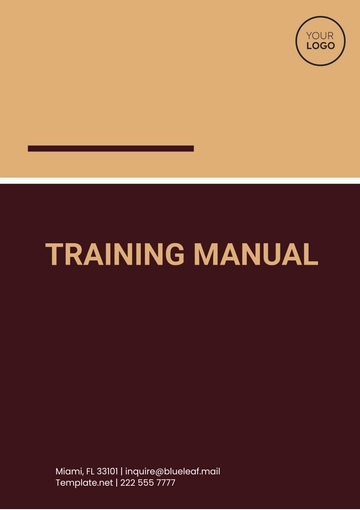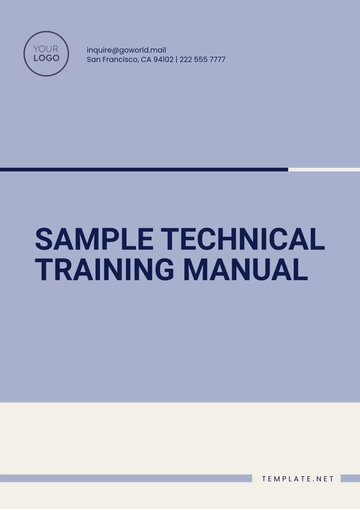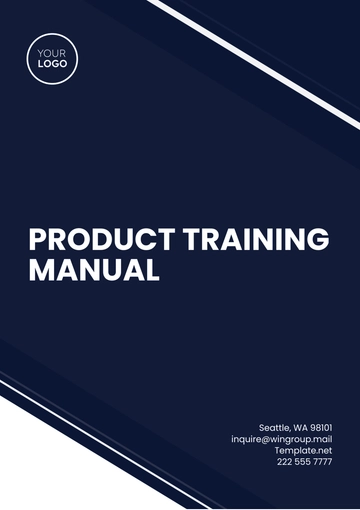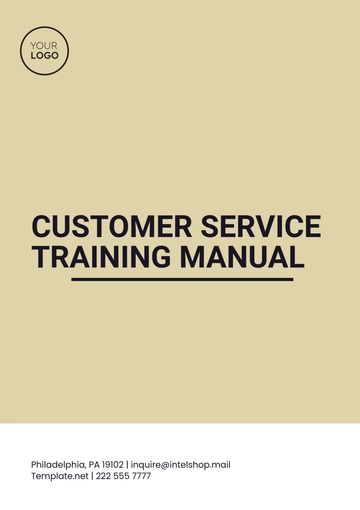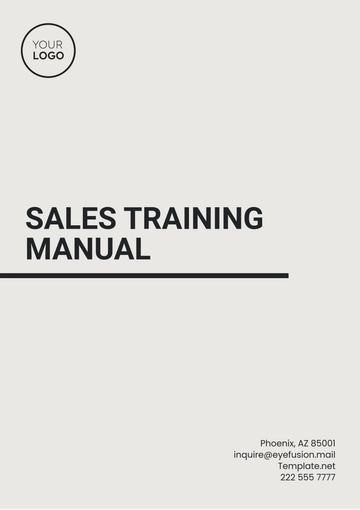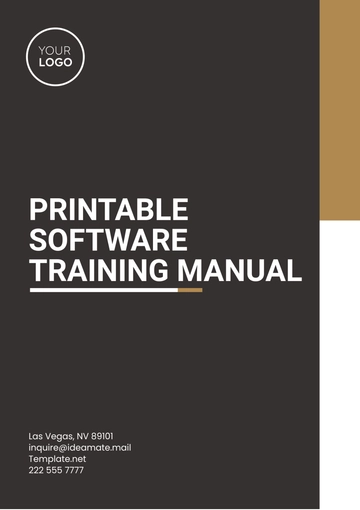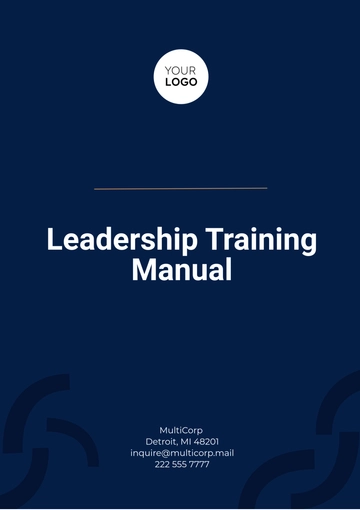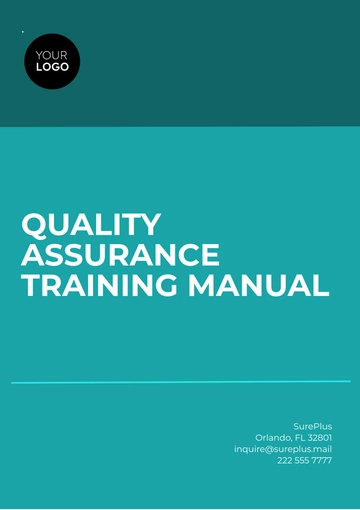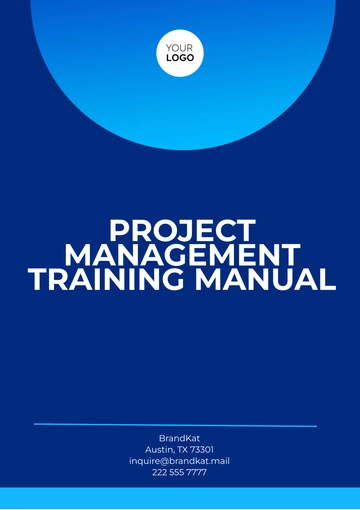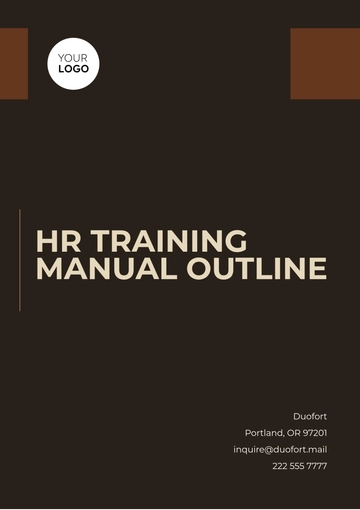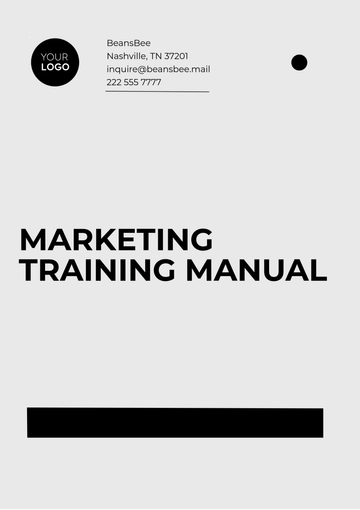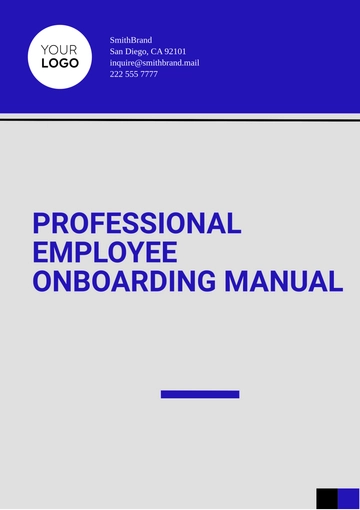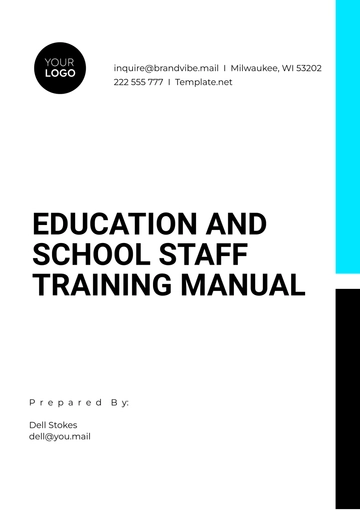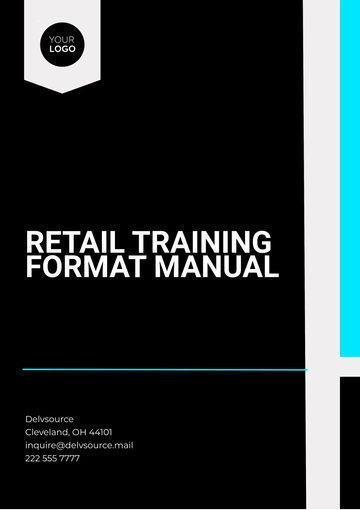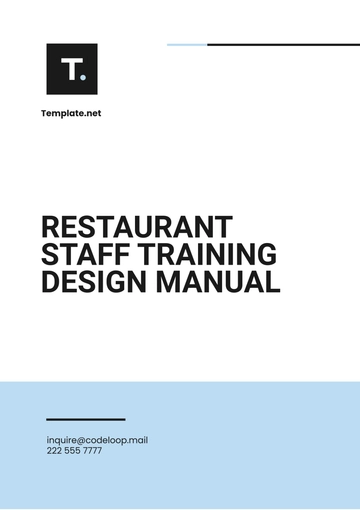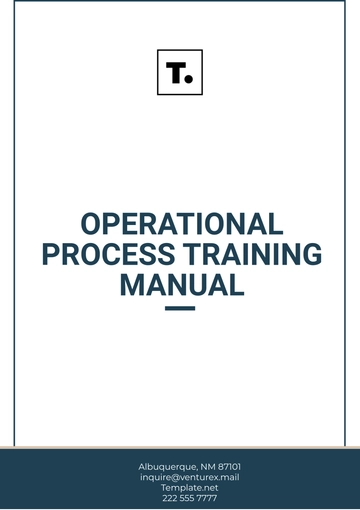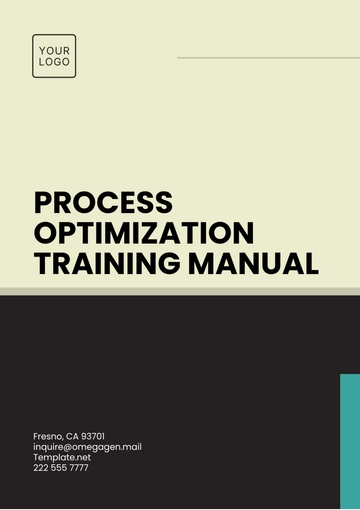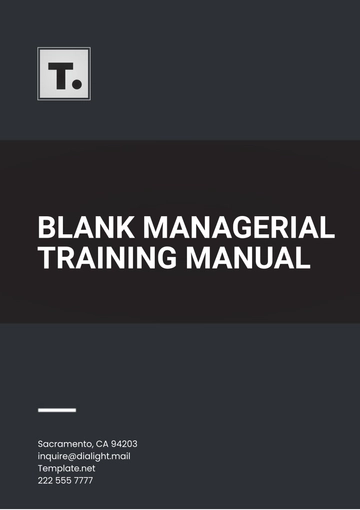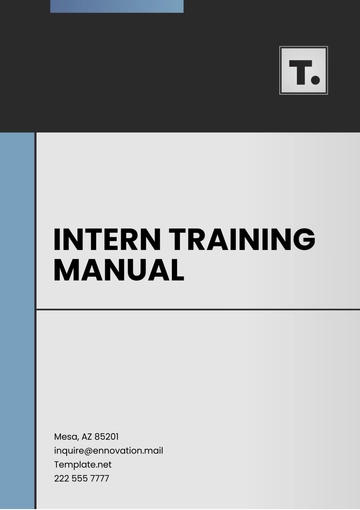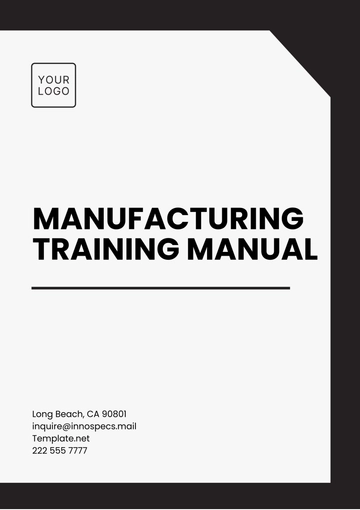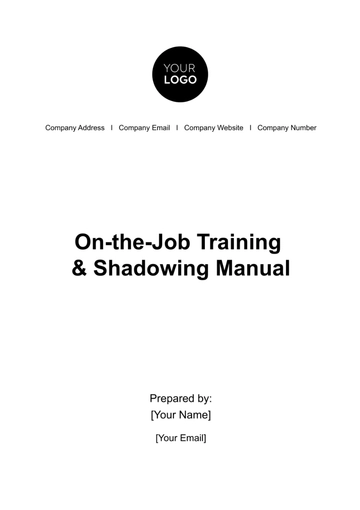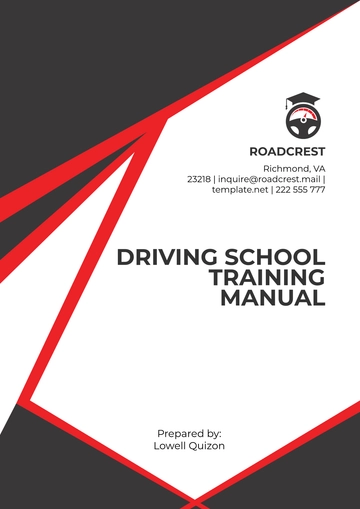Free Administration Meeting Facilitator Training Manual

Welcome to the Administration Meeting Facilitator Training Manual, meticulously designed by [Your Company Name]. This manual serves as your ultimate guide to mastering the art of facilitation within administration meetings. Enclosed within these pages are detailed methodologies, expert advice, and practical techniques designed to elevate your facilitation skills and ensure you lead meetings with confidence, efficiency, and effectiveness.
For any queries, feedback, or assistance, please reach out to us at [Your Company Email] or contact us via [Your Company Number]. We value your input highly and are committed to continuously improving the resources we provide.
1. The Role of a Meeting Facilitator
The facilitator’s role is critical to achieving strategic objectives and operational efficiency. This position transcends traditional leadership roles, requiring a sophisticated blend of strategic oversight and facilitative prowess. The facilitator is tasked with creating a conducive environment that not only encourages active participation but also ensures that the meeting's goals are achieved with precision and effectiveness.
Effective facilitation is characterized by a nuanced approach to leadership, wherein the facilitator adeptly navigates the meeting towards its intended outcomes while maintaining an atmosphere of inclusivity and respect. This section delves into the methodologies and practices that underpin successful facilitation, providing facilitators with the insights necessary to foster open dialogue, ensure balanced participation, and guide the meeting to meaningful and constructive conclusions. By adhering to these principles, facilitators can elevate the quality of administrative meetings, thereby contributing significantly to the organization's overall success.
Section | Key Responsibilities | Strategies for Success | Expected Outcomes |
|---|---|---|---|
Role of the Facilitator | - Ensure inclusive participation - Guide the meeting towards its objectives - Maintain focus and engagement | - Utilize active listening - Encourage diverse viewpoints - Balance speaking time among participants | - Productive discussions - Achieved meeting objectives - Enhanced participant engagement |
Meeting Preparation | - Define clear objectives - Assign roles and responsibilities - Prepare the agenda | - Communicate agenda in advance - Set expectations for participation - Organize logistics | - Smooth meeting flow - Clear understanding of roles - Effective time management |
Effective Communication | - Facilitate open dialogue - Provide constructive feedback - Rephrase for clarity | - Practice active listening skills - Encourage feedback from participants - Use questioning techniques to probe deeper understanding | - Enhanced clarity of discussion points - Increased collaboration - Improved problem-solving |
Facilitation Techniques | - Employ brainstorming sessions - Utilize silent idea generation - Implement break-out groups | - Choose the appropriate technique based on meeting objectives - Rotate techniques to maintain engagement | - Diverse ideas generation - Higher participant involvement - Creative solutions |
Conflict Resolution | - Identify and address conflicts early - Foster an environment of respect - Navigate disagreements professionally | - Apply mediation techniques - Encourage empathy and understanding among participants - Seek win-win solutions | - Resolved disputes - Maintained positive meeting atmosphere - Strengthened team cohesion |
Decision Making & Consensus | - Facilitate the decision-making process - Build consensus among participants - Ensure decisions align with objectives | - Present choices clearly - Encourage open feedback - Guide the group towards consensus without coercion | - Clear, actionable decisions - Group alignment and commitment - Enhanced sense of shared purpose |
Post-meeting Follow-up | - Summarize key decisions - Assign action items - Communicate next steps | - Distribute meeting minutes promptly - Set deadlines for action items - Schedule follow-up meetings as needed | - Accountability for assigned tasks - Progress tracking - Continuous momentum towards goals |
Continuous Improvement | - Self-assess facilitation skills - Seek feedback from participants - Implement improvements based on feedback | - Utilize self-assessment tools - Encourage honest feedback - Act on feedback to refine facilitation approach | - Enhanced facilitation skills - Improved meeting effectiveness - Adaptation to group dynamics |
2. Understanding Meeting Structure
Understanding the structure of meetings is paramount in orchestrating effective and efficient discussions. This section delves into the critical elements that compose the framework of successful administration meetings. By mastering agenda setting, role assignment, timeline management, and the clarification of desired outcomes, facilitators can elevate the productivity and focus of meetings. A well-structured meeting is the cornerstone of decision-making processes, enabling participants to contribute meaningfully and collaboratively towards the organization's objectives.
A. Agenda Setting
The agenda acts as the roadmap for the meeting, outlining topics for discussion, allocating time for each segment, and setting the pace of the meeting. Effective agendas are crafted with input from key participants to ensure relevance and engagement, prioritizing items according to their importance and urgency. This strategic planning sets the stage for a focused and goal-oriented discussion, guiding participants through the meeting's objectives with clarity and purpose.
Aspect | Description | Best Practices |
|---|---|---|
Purpose | Clearly defines the meeting's objective. | Begin with the end in mind; ensure the purpose aligns with the overall goals of the organization. |
Topics | Lists the main points of discussion. | Prioritize topics based on urgency and relevance; limit the agenda to manageable topics within the allotted time. |
Time Allocation | Assigns specific durations to each agenda item. | Allocate time based on complexity; include buffer periods for open discussion. |
Participant Input | Involves participants in agenda creation. | Solicit input before finalizing the agenda to ensure it covers all pertinent issues and engages participants. |
B. Defining Participant Roles
Identifying and assigning roles to participants before the meeting begins can significantly enhance the efficiency and effectiveness of the session. Roles such as note-taker, timekeeper, or specific topic leaders help distribute responsibilities, ensuring that the meeting runs smoothly and that all necessary tasks are addressed. By clarifying these roles in advance, participants come prepared, fostering a sense of ownership and accountability that drives the meeting towards its desired outcomes.
Role | Responsibilities | Selection Criteria |
|---|---|---|
Facilitator | Guides the meeting, ensures adherence to the agenda, and manages participation. | Should possess strong leadership and communication skills; ideally neutral to the discussion topics. |
Note-Taker | Documents discussions, decisions, and action items. | Requires attention to detail and the ability to summarize key points effectively. |
Timekeeper | Monitors meeting duration, ensuring each agenda item is addressed within its allotted time. | Should be organized and comfortable with interrupting discussions to keep the meeting on schedule. |
Topic Leaders | Leads specific segments of the meeting, providing expertise and facilitating discussion. | Selected based on their knowledge of the topic; responsible for preparing and presenting their section. |
C. Managing Timelines and Outcomes
Effective facilitation involves strict adherence to predefined timelines, ensuring that discussions remain on track and productive. Time management is crucial for covering all agenda items without rushing, allowing for thorough exploration of topics and fostering meaningful dialogue. Additionally, setting clear, achievable outcomes for each agenda item ensures that the meeting concludes with decisive action points, laying the groundwork for follow-up and implementation. This focus on timelines and outcomes is essential for maintaining momentum and achieving the strategic objectives of the meeting.
Element | Description | Implementation Strategies |
|---|---|---|
Time Management | Ensures the meeting stays on schedule and all topics are covered. | Use a timer; allocate extra time for complex topics; be prepared to cut discussions short to maintain focus. |
Action Items | Specific tasks assigned during the meeting, including responsible parties and deadlines. | Clearly define action items; assign them before the meeting concludes; ensure accountability with follow-ups. |
Decision Making | The process of reaching conclusions and agreeing on next steps. | Facilitate consensus through voting or discussion; document decisions for clarity and reference. |
Follow-up | Activities post-meeting to ensure decisions are implemented and action items are completed. | Schedule follow-up meetings or send out reminders for action items; review the status of decisions and tasks. |
3. Meeting Preparation
Preparation stands as the foundation upon which successful meetings are built, acting as the critical factor that differentiates between a productive session and a wasted opportunity. This section meticulously outlines the preparatory steps essential for facilitators to lead meetings that not only achieve their objectives but also inspire participation and drive. By emphasizing the importance of setting clear objectives, crafting a strategic agenda, assigning specific roles, and establishing expectations upfront, this guide equips facilitators with the tools necessary to ensure every meeting is a step towards organizational success.
A. Setting Clear Objectives
Every impactful meeting begins with a clear understanding of its purpose. Establishing specific, measurable, achievable, relevant, and time-bound (SMART) objectives ensures that the meeting has a clear direction, making it easier to evaluate its success and make decisions that align with the organization's goals.
Criteria | Description | Example |
|---|---|---|
Specific | Objectives should be straightforward and emphasize what needs to be accomplished. | Decide on the new marketing strategy for Q2. |
Measurable | Establish concrete criteria for measuring progress toward the attainment of each objective. | Increase customer engagement by 25%. |
Achievable | Objectives should be attainable and not impossible to achieve. | Identify three potential vendors for partnership. |
Relevant | Ensure the objective is aligned with broader goals. | Align the project timeline with the annual budget. |
Time-bound | Specify when the result(s) can be achieved. | Complete the hiring process by the end of March. |
B. Crafting a Strategic Agenda
A well-thought-out agenda is crucial for guiding the meeting efficiently. It outlines the topics to be discussed, allocates time for each item, and sets the order of discussion. This ensures that the meeting stays on track and that all necessary topics are covered within the allocated time.
Component | Description | Best Practice |
|---|---|---|
Topics | Define what needs to be discussed. | List topics in order of priority. |
Time Allocation | Allocate a specific time frame for each topic to ensure the meeting covers all points without running over time. | Assign more time to complex topics and include breaks. |
Discussion Order | Organize topics in a logical sequence to facilitate a smooth flow of ideas. | Start with updates or quick wins to engage participants from the start. |
C. Assigning Specific Roles and Establishing Expectations
Determining roles for each participant beforehand, such as note-taker, timekeeper, or discussion leader, helps in distributing responsibilities and ensuring the meeting's smooth execution. Setting clear expectations regarding participation, punctuality, and preparation can significantly enhance the meeting's productivity and outcome.
Role | Responsibilities | Expectations |
|---|---|---|
Facilitator | Leads the meeting, ensures adherence to the agenda, and manages discussions. | Facilitate effectively, ensuring all voices are heard. |
Note-Taker | Documents key points, decisions, and action items. | Produce clear and concise minutes promptly after the meeting. |
Timekeeper | Keeps the meeting on schedule, alerting participants as they approach the end of their allotted time. | Ensure the meeting runs smoothly and finishes on time. |
Discussion Leader | Guides discussion on specific topics, providing insights and facilitating dialogue. | Encourage participation and ensure the discussion stays on topic. |
4. Effective Communication Skills
Effective communication forms the cornerstone of successful facilitation, enabling a facilitator to lead with clarity, empathy, and authority. This section delves into the vital skills necessary for fostering an environment of open dialogue and collaboration within meetings. By mastering the art of active listening, providing constructive feedback, rephrasing for better understanding, and employing strategic questioning, facilitators can significantly improve the efficiency and outcome of discussions.
A. Active Listening
Active listening involves fully concentrating on the speaker, understanding their message, responding appropriately, and remembering what was said. It's the foundation of effective communication, enabling facilitators to gauge the room's mood and address concerns or ideas as they arise, thereby building trust and respect among participants.
B. Constructive Feedback
Offering constructive feedback is crucial for growth and improvement within a team. It involves delivering feedback in a way that is specific, actionable, and focused on behavior rather than personal characteristics. Effective facilitators use this skill to encourage progress and maintain a positive atmosphere, even in the face of challenges.
C. Strategic Questioning and Rephrasing
Strategic questioning and the ability to rephrase complex or unclear points can significantly enhance understanding and engagement. This skill allows facilitators to delve deeper into topics, clarify ambiguities, and stimulate discussion, ensuring that all participants have a clear grasp of the subject matter and can contribute meaningfully to the conversation.
5. Meeting Facilitation Techniques
Mastering the art of facilitation involves a deep understanding and application of a diverse set of techniques tailored to guide meetings towards their strategic objectives. This section unpacks a variety of proven facilitation techniques, from the energizing brainstorming sessions that spur creativity to the introspective silent generation of ideas that allows for thoughtful reflection. By incorporating these methods, facilitators can navigate the complexities of group dynamics with ease, ensuring that every meeting is not only productive but also a breeding ground for innovation and collective problem-solving.
A. Brainstorming Sessions
Brainstorming sessions are pivotal for unleashing creativity and generating a plethora of ideas within a short timeframe. Facilitators can harness this technique to encourage open-ended thinking and collaborative problem-solving, creating a vibrant atmosphere where participants feel valued and inspired to share their insights freely.
Strategy | Benefits | Considerations |
|---|---|---|
Encourage open-ended questions | Stimulates creativity and broadens the scope of ideas. | Ensure questions are clear and directly related to the meeting's objectives. |
Implement a "no criticism" rule | Creates a safe space for sharing, fostering more ideas. | Remind participants of this rule to maintain a positive atmosphere. |
Use round-robin sharing | Ensures every participant has the opportunity to contribute. | Be mindful of group size; larger groups may require more time. |
Prioritize ideas post-session | Helps identify the most viable solutions. | Develop criteria for prioritization that align with meeting goals. |
B. Silent Generation of Ideas
The silent generation of ideas is a powerful technique for inclusive participation, allowing individuals time to think and articulate their thoughts privately before sharing them with the group. This method ensures that all voices, including those of introverted participants, are heard, enriching the discussion with diverse perspectives.
Strategy | Benefits | Considerations |
|---|---|---|
Provide quiet time for individual ideation | Allows for deep thinking and ensures introverted voices are heard. | Determine an appropriate amount of silent time based on the complexity of the topic. |
Use written submissions | Reduces bias and influence from more dominant personalities. | Ensure anonymity if possible to encourage genuine feedback. |
Facilitate group discussion on shared ideas | Enables collective exploration and refinement of ideas. | Structure the discussion to give equal weight to all contributions. |
Use technology aids | Can streamline the collection and sharing of ideas. | Choose user-friendly tools that all participants are comfortable with. |
C. Managing Meeting Dynamics
Effective facilitation also involves adeptly managing the meeting's dynamics to maintain focus and engagement. Techniques such as setting ground rules, using visual aids, and incorporating time-bound activities help keep the discussion on track and participants invested in the meeting's objectives. By applying these strategies, facilitators can steer meetings towards productive outcomes, ensuring that time is used efficiently and goals are met.
Strategy | Benefits | Considerations |
|---|---|---|
Set clear ground rules at the start | Establishes expectations and fosters mutual respect. | Tailor rules to the specific needs and culture of the group. |
Utilize visual aids | Enhances understanding and retention of information. | Ensure aids are accessible to all participants and relevant to the discussion. |
Incorporate time-bound activities | Keeps the meeting on track and maintains focus. | Be flexible; some discussions may require more time than anticipated. |
Engage in active facilitation | Ensures discussions remain productive and aligned with objectives. | Adapt facilitation techniques to the flow of the meeting and the needs of the participants. |
6. Conflict Resolution Strategies
This section is dedicated to equipping facilitators with sophisticated strategies for addressing and resolving conflicts in a manner that promotes respect, fosters openness, and builds understanding among meeting participants. Emphasizing the importance of a proactive approach to conflict, these strategies are designed to help facilitators navigate disputes with tact and diplomacy, thereby preserving the meeting's collaborative spirit and keeping discussions aligned with the agenda.
A. Identifying and Addressing Conflict Early
Early identification and intervention are key to preventing conflicts from escalating. By recognizing the signs of emerging disagreements and addressing them promptly, facilitators can facilitate a respectful dialogue that encourages understanding and resolution before tensions become counterproductive.
Strategy | Description | Implementation Tips |
|---|---|---|
Sign Recognition | Be vigilant for verbal and non-verbal cues indicating discomfort or disagreement among participants. | Listen actively, observe body language, and monitor the tone of the conversation for signs of emerging conflict. |
Prompt Intervention | Address conflicts as soon as they arise to prevent escalation. | Facilitate a discussion about the disagreement promptly, ensuring it is constructive and focused on resolution. |
Neutral Ground | Maintain a neutral stance to mediate the conflict effectively. | Avoid taking sides and remain impartial to facilitate an unbiased resolution process. |
B. Encouraging Open Dialogue
Creating a safe space for open dialogue is essential for resolving conflicts constructively. Facilitators should encourage participants to express their viewpoints and concerns openly, ensuring that all sides are heard and understood. This approach helps to uncover the root causes of conflict and fosters a culture of empathy and mutual respect.
Technique | Description | How to Encourage |
|---|---|---|
Safe Space Creation | Foster an environment where participants feel comfortable sharing their thoughts and feelings. | Set clear ground rules that promote respect and openness; reassure participants that all viewpoints are valued. |
Active Listening | Demonstrate genuine interest in understanding participants' perspectives. | Encourage speakers by nodding and providing verbal affirmations; ask clarifying questions. |
Equal Participation | Ensure that all participants have the opportunity to express their views. | Actively invite input from quieter members; use round-robin or other structured sharing techniques to give everyone a voice. |
C. Seeking Win-Win Solutions
The goal of conflict resolution in meetings is to find solutions that are acceptable to all parties involved. Facilitators play a crucial role in guiding participants towards compromise and collaboration, emphasizing the importance of win-win outcomes that align with the meeting's objectives and the organization's broader goals. By applying these strategies, facilitators can effectively manage conflicts, transforming potential disruptions into opportunities for enhancing group dynamics and achieving consensus.
Approach | Description | How to Implement |
|---|---|---|
Common Ground Identification | Focus on identifying shared interests or goals as the basis for resolution. | Encourage participants to articulate their core interests; highlight overlaps as a foundation for agreement. |
Option Generation | Encourage the development of multiple solutions to the conflict. | Facilitate a brainstorming session focused on generating various solutions that address the interests of all parties. |
Consensus Building | Guide the group towards agreeing on a solution that is acceptable to everyone. | Use techniques like voting, ranking options, or negotiated compromise to arrive at a mutually agreeable solution. |
7. Making Decisions and Building Consensus
Facilitating decision-making and consensus-building is a nuanced process that demands a strategic blend of clarity, inclusivity, and guidance. This section delves into the methodologies facilitators can employ to lead their teams toward unified decisions, emphasizing the importance of transparently presenting options, soliciting broad-based feedback, and navigating discussions toward consensus. By mastering these techniques, facilitators ensure that decisions made during meetings are not only aligned with organizational objectives but also embody the collective insight and agreement of all participants.
A. Presenting Options Clearly
Clear presentation of options is fundamental to informed decision-making. Facilitators must ensure that all potential choices are laid out comprehensively, highlighting the benefits and drawbacks of each. This transparency allows participants to fully understand the implications of their choices, facilitating a more informed and thoughtful discussion.
B. Encouraging Comprehensive Feedback
Soliciting feedback from all meeting participants ensures that diverse perspectives are considered, enriching the decision-making process. Facilitators should create an environment where feedback is not only welcomed but actively sought, enabling a deeper dive into the options at hand and uncovering any concerns or insights that might otherwise be overlooked.
C. Guiding Towards Consensus
Building consensus requires skillful navigation of discussions, ensuring that all voices are heard and that the group moves toward a decision that everyone can support. Facilitators play a key role in mediating differences, highlighting common ground, and steering the conversation in a constructive manner. This process may involve compromise and adaptation, but the end goal is to achieve a decision that reflects the collective agreement and commitment of the group, thereby ensuring more effective and cohesive implementation.
8. Post-meeting Follow-up
The efficacy of a meeting is often determined by the actions taken afterward, making post-meeting follow-up a crucial aspect of the facilitation process. This section outlines key strategies for facilitators to ensure that the momentum generated during the meeting translates into tangible results. By emphasizing the importance of thorough follow-up actions, facilitators can reinforce accountability among participants, ensure clarity regarding decisions made and next steps, and facilitate the continuous progress towards meeting objectives.
A. Documenting Decisions and Action Items
Immediately after the meeting, facilitators should document and distribute a summary of key decisions made, action items assigned, and deadlines for completion. This record serves as a reference point for all participants, ensuring that everyone is aligned on the outcomes and responsibilities.
B. Communicating Next Steps
Clear communication of next steps, including who is responsible for what action items and by when these should be completed, is critical. Facilitators should ensure this information is disseminated promptly to all relevant stakeholders, maintaining transparency and alignment.
C. Monitoring Progress
Setting up mechanisms to monitor the progress of action items is essential for maintaining momentum and ensuring accountability. Facilitators might schedule follow-up meetings or check-ins to review the status of actions, address any challenges, and celebrate achievements. This ongoing engagement helps to keep the team focused and motivated towards achieving the meeting's objectives, reinforcing the value of the meeting and the importance of each participant's contribution.
- 100% Customizable, free editor
- Access 1 Million+ Templates, photo’s & graphics
- Download or share as a template
- Click and replace photos, graphics, text, backgrounds
- Resize, crop, AI write & more
- Access advanced editor
Enhance your administrative skills with Template.net's Administration Meeting Facilitator Training Manual Template. This editable and customizable tool is designed for easy input of your corporate necessities. Crafted for efficiency, the document is editable in our AI Editor Tool, ensuring flexibility and convenience. Improve professionalism, organization, and leadership within your meetings. Elevate your team's productivity today.
